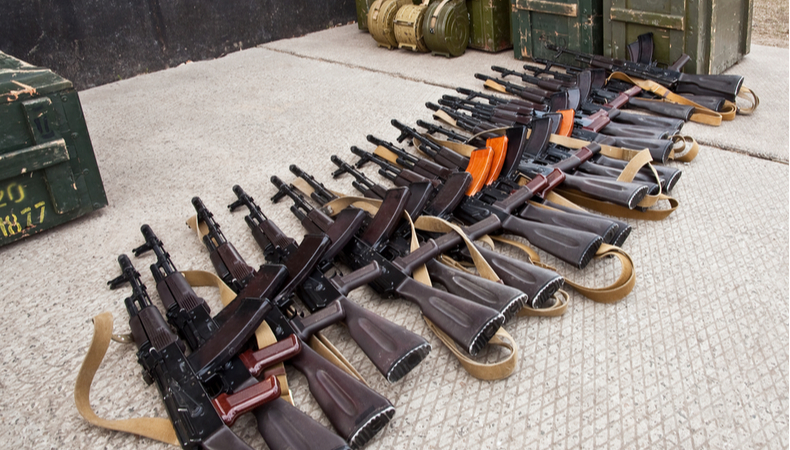A new investigation reveals an arms smuggling between Iran, Yemen and Somalia


The study crossed the serial numbers of Type 56-1, identified in Somalia, with almost 5,200 similar rifles recovered in 6 locations in the country between August 2018 and May 2021. The proliferation of weapons, linked to the Yemeni conflict, in Somalia, the report warned, could have potentially severe implications for the security of Puntland, an autonomous Somali region, and for the country as a whole, as well as for neighboring Ethiopia and Kenya.
Iran’s weapons supplied to its Houthi allies in Yemen would be smuggled into Somali territory via the Gulf of Aden. In Somalia, al-Shabaab terrorists linked to al Qaeda are fighting to overthrow the government and take control of large parts of the country. The Global Initiative against Transnational Organized Crime said its study drew not only on data collected in the field but also on inventories of 13 dau intercepted by naval vessels. This is the first publicly available research on the extent of illicit arms smuggling from Yemen into the Horn of Africa.
“Weapons resulting from trade between Iran and Yemen are trafficked into Somalia itself,” said the study released on Wednesday, 10 November. “Iran has repeatedly denied any involvement in the trafficking of arms destined for the Houthis. However, a preponderance of evidence points to Iranian state supply”. Tehran’s Foreign Ministry and a spokesperson for the Houthi forces have not yet responded to requests for comment on the research. Not even the Somali government spokesman and the internal security minister responded to calls or messages from the Reuters news agency, seeking clarification.
The study said investigators were unable to identify in detail the buyers and sellers of the guns. However, he specified that several elements indicated that the weapons were initially supplied by the Iranian state, such as very close serial numbers, meaning that the material was part of the same shipment. Other evidence showing Iranian involvement was information from satellite navigation systems on the kidnapped dau and gangs of traffickers.
For example, a dau carrying weapons seized from a US Navy ship had a GPS with memorized locations in Iran, southern Yemen, and Somalia, including a small anchorage near the port of Jack, which houses an Iranian naval base, and is referred to as “home” the Yemeni port of Mukalla, a well-known hub for arms smuggling.
The study finally revealed that the weapons end up in trafficking networks where customers are often Somali armed factions looking for advantages ahead of the presidential elections in the country, scheduled for the end of the month. As well as clan militias and rival Islamic rebel groups linked to al Qaeda and the Islamic State.
The civil war in Yemen serves as a battleground for Saudi Arabia and its allies against the Iranian-backed Houthi rebels. While Riyadh supports the internationally recognized government based in Aden, evidence from the Global Initiative Against Transnational Organized Crime report suggested that the Houthis received extensive material support and training from the Islamic Republic of Iran. This Iranian support consists of deliveries of light and small arms (SALW) through sophisticated transnational shipping networks.




